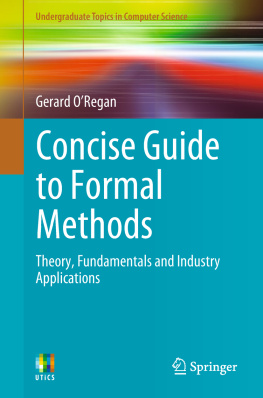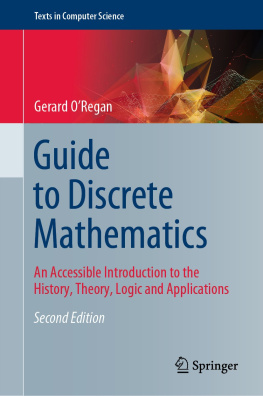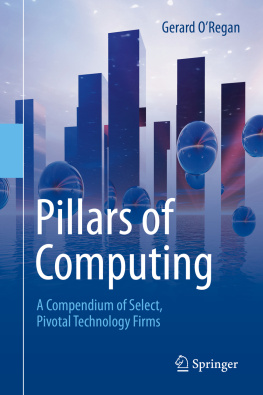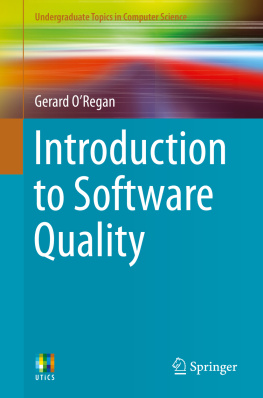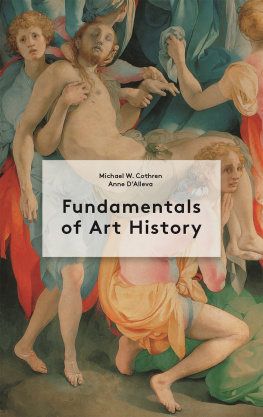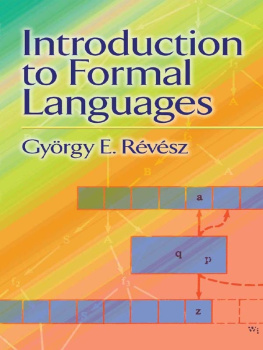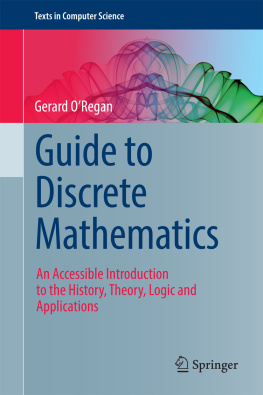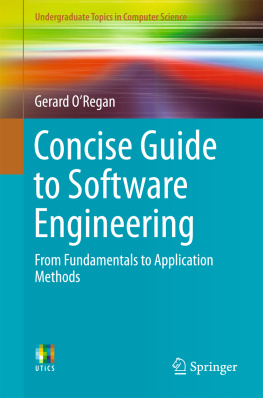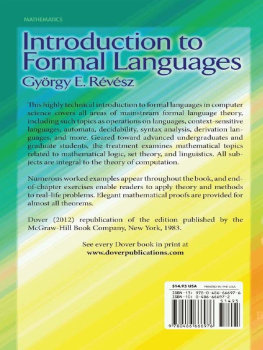Gerard ORegan - Concise guide to formal methods - theory, fundamentals and industry applica
Here you can read online Gerard ORegan - Concise guide to formal methods - theory, fundamentals and industry applica full text of the book (entire story) in english for free. Download pdf and epub, get meaning, cover and reviews about this ebook. City: Cham, year: 2017, publisher: Springer International Publishing, genre: Computer. Description of the work, (preface) as well as reviews are available. Best literature library LitArk.com created for fans of good reading and offers a wide selection of genres:
Romance novel
Science fiction
Adventure
Detective
Science
History
Home and family
Prose
Art
Politics
Computer
Non-fiction
Religion
Business
Children
Humor
Choose a favorite category and find really read worthwhile books. Enjoy immersion in the world of imagination, feel the emotions of the characters or learn something new for yourself, make an fascinating discovery.
- Book:Concise guide to formal methods - theory, fundamentals and industry applica
- Author:
- Publisher:Springer International Publishing
- Genre:
- Year:2017
- City:Cham
- Rating:4 / 5
- Favourites:Add to favourites
- Your mark:
- 80
- 1
- 2
- 3
- 4
- 5
Concise guide to formal methods - theory, fundamentals and industry applica: summary, description and annotation
We offer to read an annotation, description, summary or preface (depends on what the author of the book "Concise guide to formal methods - theory, fundamentals and industry applica" wrote himself). If you haven't found the necessary information about the book — write in the comments, we will try to find it.
Concise guide to formal methods - theory, fundamentals and industry applica — read online for free the complete book (whole text) full work
Below is the text of the book, divided by pages. System saving the place of the last page read, allows you to conveniently read the book "Concise guide to formal methods - theory, fundamentals and industry applica" online for free, without having to search again every time where you left off. Put a bookmark, and you can go to the page where you finished reading at any time.
Font size:
Interval:
Bookmark:
- Standish chaos report
- Software life cycles
- Waterfall model
- Spiral model
- Rational Unified Process
- Agile development
- Software inspections
- Software testing
- Project management
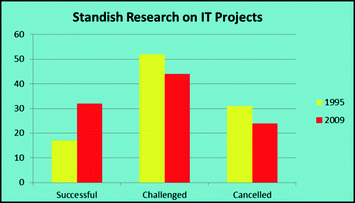
- Methodologies to design, develop and test software to meet customers needs.
- Software is engineered. That is, the software products are properly designed, developed and tested in accordance with engineering principles.
- Quality and safety are properly addressed.
- Mathematics may be employed to assist with the design and verification of software products. The level of mathematics employed will depend on the safety critical nature of the product. Systematic peer reviews and rigorous testing will often be sufficient to build quality into the software, with heavy mathematical techniques reserved for safety and security critical software .
Font size:
Interval:
Bookmark:
Similar books «Concise guide to formal methods - theory, fundamentals and industry applica»
Look at similar books to Concise guide to formal methods - theory, fundamentals and industry applica. We have selected literature similar in name and meaning in the hope of providing readers with more options to find new, interesting, not yet read works.
Discussion, reviews of the book Concise guide to formal methods - theory, fundamentals and industry applica and just readers' own opinions. Leave your comments, write what you think about the work, its meaning or the main characters. Specify what exactly you liked and what you didn't like, and why you think so.

